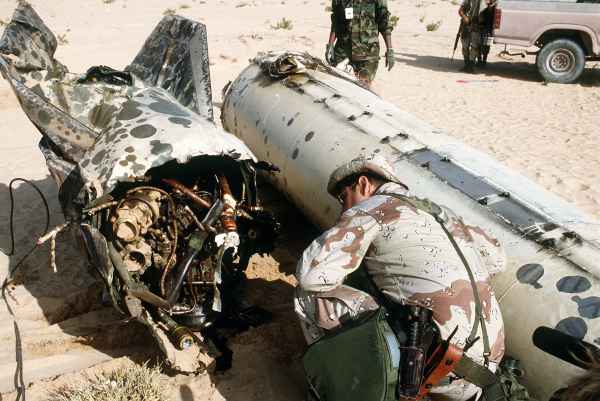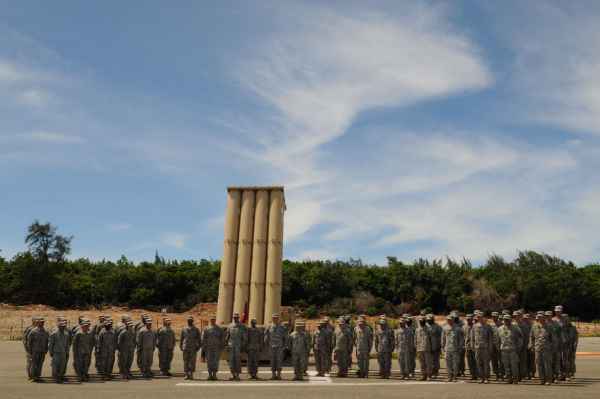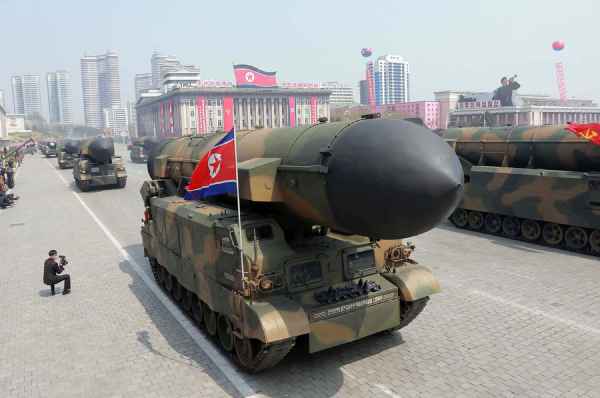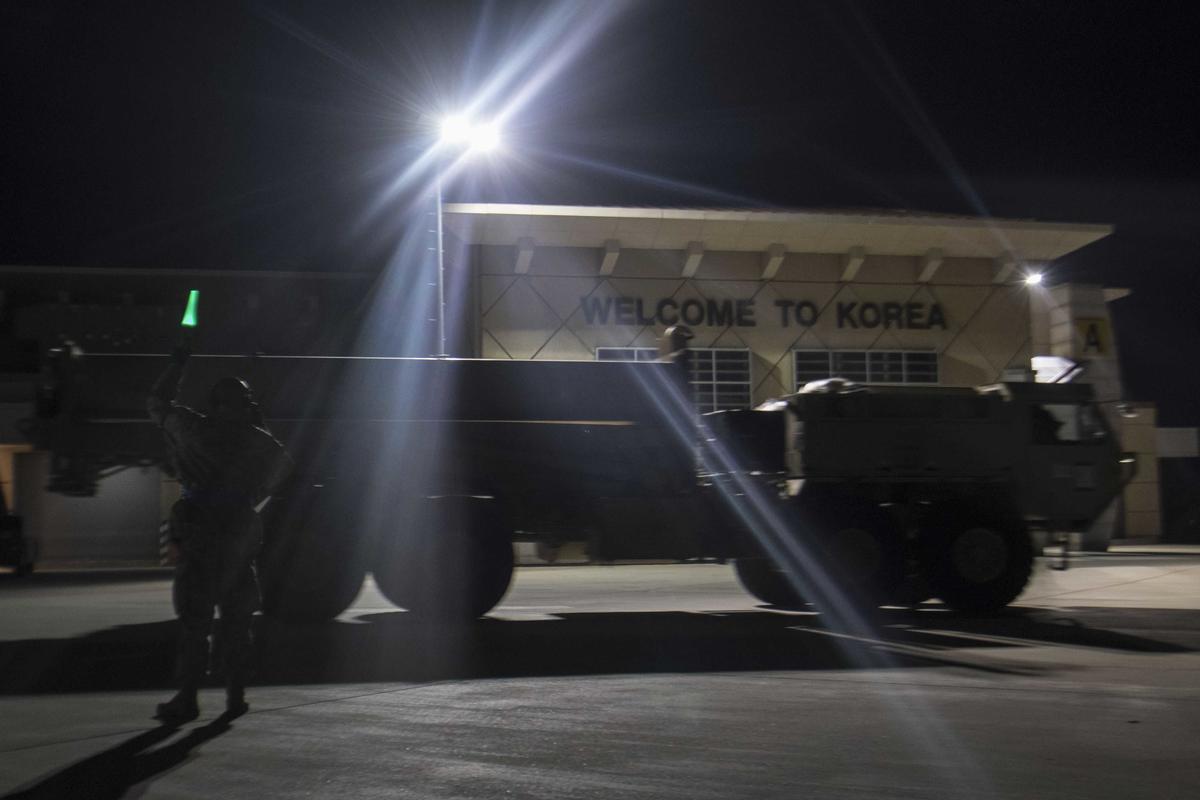Today, with a still-growing partnership in the U.S. Army’s Patriot program and a nascent coalition partnership with the Terminal High Altitude Area Defense (THAAD) missile system, our international air and missile defense program is larger and more capable than ever before. To remain successful however, there is still much work to be done with interoperability, modernization, and defense against future threats, including unmanned aerial systems and cruise missiles. The U.S. will once again rely heavily on the Netherlands and the other members of its international alliance of air defense partners.
Colonel U.S. Army Alan A. Wiernicki*
Saddam Hussein and the Iraqi Army surprised the world when they invaded neighboring Kuwait on August 2, 1990. Within weeks, U.S. Army Patriot missile battalions were deployed to defend key strategic assets in Saudi Arabia and Israel from attack by Iraq’s Scuds and other short range ballistic missiles. With incomplete testing, unproven technology, and an inventory of only three anti-tactical ballistic missiles, the U.S. Patriot units were simply the best hope available for defense of U.S. and allied interests in the region. Iraq fired 42 Scud missiles at coalition forces during Operation Desert Storm. Critics and pundits alike will forever debate the true effectiveness of the Patriot against Scud warheads during the Gulf War. Indeed, some have since built durable careers centered on that debate. However, during the conflict itself, the worldwide consensus was that the “mission kills” of the Patriot defenses were extremely effective. Without a doubt, that belief served to bolster the confidence of the U.S.-led multinational coalition and to discourage Saddam Hussein and the Iraqi forces.
When Desert Storm ended, it was clear to the world that the anti-ballistic missile defense mission had only just begun. It took a multinational coalition to repel Saddam Hussein’s aggression, and it would take a similar alliance of nations to develop a multi-layered ballistic missile defense program. The air and missile defense alliance that resulted has seen dramatic international growth and great success since the Gulf War, both in a deterrence role and during combat operations. Today, with a still-growing partnership in the U.S. Army’s Patriot program and a nascent coalition partnership with the Terminal High Altitude Area Defense (THAAD) missile system, our international air and missile defense program is larger and more capable than ever before. To remain successful however, there is still much work to be done with interoperability, modernization, and defense against future threats, including unmanned aerial systems and cruise missiles.

U.S. Air Force Senior Master Sgt. James Miles of the 4409th Explosive Ordnance Disposal Branch examines the tail section of a Scud missile shot down in the desert by an MIM-104 Patriot tactical air defense missile during Operation Desert Storm. Photo U.S. Air Force
A New Alliance
The Persian Gulf War raised a worldwide awareness that hostile nations could pose a threat to their enemies with relatively inexpensive ballistic missile technology. As the U.S. worked in earnest on research and development to improve technology, allied partners began to join the U.S. and take similar action. By the late 1990s, nine allied nations had become air defense partners with the U.S. Patriot program through Foreign Military Sales (FMS) initiatives. When Operation Iraqi Freedom (OIF) began in March 2003, forty U.S. Patriot firing batteries were deployed as well as twenty-two more batteries from four coalition partners. Saudi Arabia, Kuwait and Israel defended their homelands, while the Netherlands deployed three PATRIOT batteries to Turkey. All nine ballistic missiles fired from Iraq against defended areas were successfully defeated. Importantly, six were destroyed by U.S. batteries, two by Kuwait Patriot batteries; and one was successfully fired on and destroyed by both U.S. and Kuwaiti units. In just a little more than a decade after Desert Storm, the world no longer had to rely on untested and unproven technology as the best hope available. The new Patriot Advanced Capability three (PAC-3) missile, a kinetic, hit-to-kill missile system had been successful. More importantly, the world did not have to rely on U.S. air defenses alone to defend from ballistic missile attack. A new, combat-proven system was now available to a multinational force. The resolve of this new coalition would be tested time and again.
In 2013, the civil war in Syria led to concern for the defense of a critical NATO partner in Turkey. A multinational coalition of Patriot forces from Germany, the Netherlands, Spain and the United States responded with successful defense and deterrence for more than four years. Similarly, when the civil war in Yemen threatened the Kingdom of Saudi Arabia in 2015, Patriot units from both Saudi Arabia and their Gulf Cooperation Council (GCC) partner, the United Arab Emirates (UAE), were deployed and continue to actively defend with remarkable success against missile attacks today. The international air and missile defense alliance has been repeatedly tested and proven in combat. The success of these partnerships is due in great part to a multilateral commitment to U.S.-based air and missile defense security assistance programs.
Foreign Military Sales
The second war with Iraq ushered in a dramatic increase in the foreign military sales (FMS) of U.S. weapons. The sales have included Air Defense Artillery (ADA) weapons, early warning networks, and command and control systems. Foreign military sales are a critical component of U.S. national security strategy and Combatant Command theater security cooperation plans. The Defense Security Cooperation Agency (DSCA), which manages FMS for the Department of Defense, provides the following definition of FMS. “The Foreign Military Sales program is the government-to-government method for selling U.S. defense equipment, services, and training. Responsible arms sales further national security and foreign policy objectives by strengthening bilateral defense relations, supporting coalition building, and enhancing interoperability between U.S. forces and militaries of friends and allies.”[1]
United by the common threat of missile attack from nations such as Iran, Syria, North Korea, and Russia, U.S. allies ramped up defense spending to meet their defense requirements. Their choice to partner with the U.S. is significant because in today’s global economy, many nations aggressively compete in the marketing of defense articles to our allies. The U.S. obviously prefers that allies choose American over foreign systems due to the diplomatic, military and economic advantages of such sales as well as the advantages of interoperability.[2] While the U.S. FMS system is sometimes plagued by frustrating bureaucratic policies, most would likely agree that it has distinct advantages over weapons deals with other countries. While allies do have options, they typically choose the U.S. for a few key reasons, particularly when buying air and missile defense systems.

The A4 THAAD deployed to Andersen Air Force Base, Guam in April 2013 as a part of the 94th AAMDC Task Force Talon Mission. Photo U.S. Army, A. Kersnher
First, FMS denotes a binding contract with the U.S. Government. Once a foreign government officially requests military articles or services, DSCA notifies Congress of the sale and final approval must be approved by the U.S. Department of State. Once the case is approved, the contract is managed by the U.S. government’s multi-leveled security assistance network, headed by DSCA. Foreign partners deal directly with the U.S. government for procurement, upgrades and maintenance contracts until the FMS case reaches its end point and is jointly terminated. The U.S. government applies the same system to program management for its partners as it does for its own weapons programs.
A second reason partners choose the U.S. is because of confidence in the U.S. military’s logistics systems. As a combat proven expeditionary force, the U.S. military’s lifecycle logistics network is considered to be better tested, more responsive and more reliable than the programs of other nations. Given the considerable investment involved in procurement of defense articles, most countries are averse to the risk of program cancellation or the potential scarcity of spare parts. Our allies can be assured that the U.S. military industrial complex will be there to meet their needs throughout the duration of their FMS programs.
Another key reason to choose U.S. weapons is because U.S. military forces often are already deployed with those weapons systems around the world. This has certainly been the case with U.S. Army ADA units in Europe, the Middle East and the Pacific. Forward stationed and deployed forces demonstrate U.S. commitment to defend against a common threat and give interested allied leadership an opportunity to get hands on and observe the system in a combat configuration. Likewise, the deployments allow the U.S. military the unique opportunity to showcase its firepower in a way other countries cannot. Given the historically enduring nature of U.S. air defense deployments, purchasing U.S. systems also creates the potential for long-term, bilateral training partnerships that can accelerate and improve the combat capability of both sides. Government to government contracts, reliable logistics, and the opportunity to work alongside deployed U.S. forces are key motivators in choosing the U.S. as an air defense partner, therefore strengthening the greater alliance between countries.
Economy of Force
As noted previously, there is an economic component to foreign military sales that must be acknowledged. Again, from the DSCA definition, “These sales contribute to American prosperity by improving the U.S. balance of trade position, sustaining highly skilled jobs in the defense industrial base, and extending production lines and lowering unit costs for key weapon systems.”[3] Once again, the Patriot missile program provides an example that benefits all U.S. partners in air defense.
Since its initial fielding to the U.S. Army in 1982, 13 nations have purchased the Patriot missile system. Partners now include the Netherlands, Germany, Japan, Israel, Saudi Arabia, Kuwait, Taiwan, Greece, Spain, Korea, the United Arab Emirates, Qatar and Poland. In addition to the FMS case for the weapon system itself, each Patriot partner also has a FMS case for what is called the International Engineering Services Program (IESP). The IESP cases are managed by the U.S. Army’s Lower Tier Project Office and the Program Executive Office–Missiles and Space. Each year, leaders from the U.S. and its partners in air defense meet in the United States to discuss the overall future of the program, including plans to share and reduce ownership costs, and to review testing plans in an effort to increase reliability and performance over time. The IESP provides a forum for partners to have an equal voice and assume a fair share in the cost of research and development and testing of the program. At the 2012 IESP, U.S. leaders reported a plan to maintain Patriot in the U.S. inventory until beyond 2040.[4] Sustainment of the U.S. program for another 30 years would not have been feasible without the growing alliance of missile defense partners. In fact, the UAE’s FMS case for air defense systems in 2008 led to the first new production of Patriot since a delivery to Greece in 1999 and the first international sale of the THAAD missile system. New partners lead to new production lines, increased investment in research and development, shared costs, and more rapid fielding of new technologies. Additionally, long-term sustainment of the U.S. program reassures our partners that their own programs will have the benefit of continued U.S. support.
The Future
The Persian Gulf War served as a call for partnership, innovation and collaboration as the U.S. and its allies in air and missile defense rallied to respond to the ballistic missile threat – a mission that will continue far into the future. The missile programs of our enemies are becoming more threatening with longer ranges, maneuvering capability, and more lethal warheads. We will continue to develop our Patriot and THAAD system software and hardware technology to effectively counter those threats. However, new challenges will also face our coalition.

North Korea displays ballistic missiles during a military parade in the capital Pyongyang marking the 105th anniversary of the birth of the late leader Kim Il-Sung, April 15, 2017. Photo ANP/AFP PHOTO/KCNA VIA KNS
With our growing alliance comes an increasing challenge with international interoperability. While we share the same air defense weapons systems, each country has its own suite of hardware and software systems for data and voice communications. Within each Geographic Combatant Command, the U.S. maintains necessarily strict requirements for data sharing and foreign disclosure of classified information. We must continue to work together on cross-domain hardware solutions as well as bilateral and multilateral policy agreements if we are ever to realize the full potential of a truly integrated air and missile defense alliance.
While the focus of the past twenty-five years has primarily been on defense against short and medium range ballistic missiles, the current proliferation of unmanned aerial systems (UAS) and cruise missiles presents new challenges to our future airspace. Small, commercially available UAS systems are already in use worldwide, primarily for reconnaissance missions. Larger UAS systems are capable of longer range surveillance and lethal attacks.
While Patriot missile forces are certainly capable of defeating these threats, the counter-UAS mission is better handled by short range air defense (SHORAD) systems. The U.S. currently has a deficit in SHORAD capacity, with programs such as the Indirect Fire Protection Capability (IFPC) Multi-Mission Launcher (MML) and the Integrated Battle Command System currently in developmental testing. The IFPC system has multiple incremental builds, focused first on defense against UAS and cruise missiles, followed by enhanced capability against rockets, artillery and mortars. The MML will capitalize on existing Sentinel radars and a variety of available interceptors. Finally, the Integrated Battle Command System (IBCS) will allow for integration and mission command of all ADA systems, both sensor and shooter, from ballistic missile to counter-UAS defense.

U.S. Forces Korea continues its progress in fulfilling the decision to install a Terminal High Altitude Area Defense (THAAD) on the Korean Peninsula. Photo U.S. Army, J. Larlee
The success of these developmental programs will, in great part, determine the future of U.S. Army Air Defense Artillery systems, organizational force structure and doctrine. The result promises to be a far more robust and lethal air and missile defense force that is capable of defending against all threats from the air. Of course, the U.S. will once again rely heavily on its international alliance of air defense partners, as no country can face the increasing threats alone. Working together against a common threat, the partnership of our combined force will no doubt result in the same combat proven success we have collectively achieved since Operation Desert Storm.
* Colonel Alan A. Wiernicki is a career Air Defense Artillery Officer in the U.S. Army. He currently serves as the Deputy Commanding Officer for the 32d Army Air and Missile Defense Command at Fort Bliss, Texas. He previously served as the commander of the 11th Air Defense Artillery Brigade at Fort Bliss, which has operated a Patriot Missile System officer exchange program with the Royal Netherlands Air Force for nearly 15 years.
[1] ‘Foreign Military Sales (FMS),’ Defense Security Cooperation Agency,http://www.dsca.mil/programs/foreign-military-sales-fms.
[2] ‘A Comparison of Foreign Military Sales and Direct Commercial Sales,’ Defense Institute of Security Assistance Management Greenbook: Chapter 15, July 30, 2012, http://www.disam.dsca.mil/documents/greenbook/v31/15_Chapter_30-jul-2012.pdf.
[3] ‘Foreign Military Sales (FMS),’ Defense Security Cooperation Agency.
[4] “Patriot International Engineering Services Program Review”, Briefing slides from the annual program review, Denver Colorado, June 4, 2012.